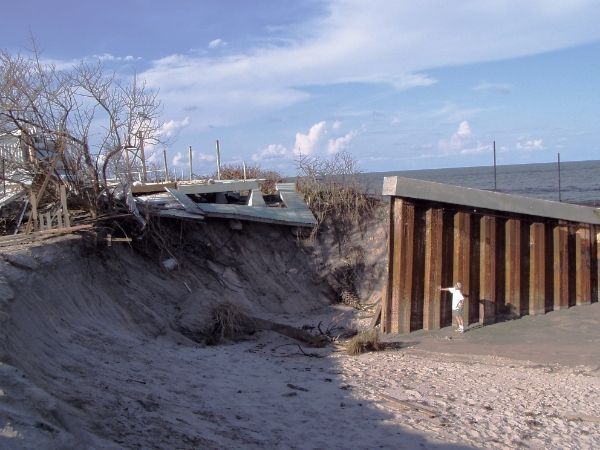The southern Atlantic shores of the United States are highly vulnerable to sea level rise, which could be devastating for sea turtles. Gary Appelson, policy director at the Sea Turtle Conservancy in Florida, says that “sea level rise is one of the biggest threats” facing sea turtles.
Along Florida’s central Atlantic Coast, parts of the region could see a 49 to 80 percent decline in the area of ocean beach with just a 15-inch rise in sea level, which is well within the range projected during this century.
Unhindered, beaches would naturally migrate inland. But “in Florida, the beachfront development line means that the beach cannot move inland as it would naturally,” Appelson says. People try to protect ocean front properties by building sea walls, “but this only increases the erosion around them and has devastating impacts on turtles and their nesting habitat.” Florida has “the most aggressive beach renourishment program in the country” and spends tens of millions of dollars every year adding sand to the beach. This is economically unsustainable because “the cost of doing this in perpetuity will be unbelievable.”

STC’s Gary Appelson standing in front of an exposed sea wall in Brevard County after a hurricane.
Florida’s beaches host 90 percent of all the sea turtle nesting in North America, as well as approximately 80 million tourists every year.172 Sea level rise is already a problem. “The beaches are eroding, Appelson says. ”They have been eroding for decades.” Furthermore, sea turtles “depend on the in-shore marine environment” of barrier islands, bays and inlets. “Sea turtles use in-shore grass beds for extensive foraging habitat and depend on near-shore reefs for refuge. And they come from all over. Sea turtles leave their nesting areas far, far away to come to Florida’s grass beds.” These critical habitats will also be impacted by rising seas and increasing temperatures.
“Florida’s beaches are ground zero for sea level rise,” says Appelson, posing a huge threat not only to sea turtles but to Florida’s coastal economy and residents. “One of the most important things we can do to protect sea turtles, and people, is to reform coastal management… to incorporate climate change and sea level rise into planning, in addition to reducing carbon emissions.”
This is an excerpt from National Wildlife Federation’s report Wildlife in a Warming World: Confronting the Climate Crisis. To read the full report, click here.